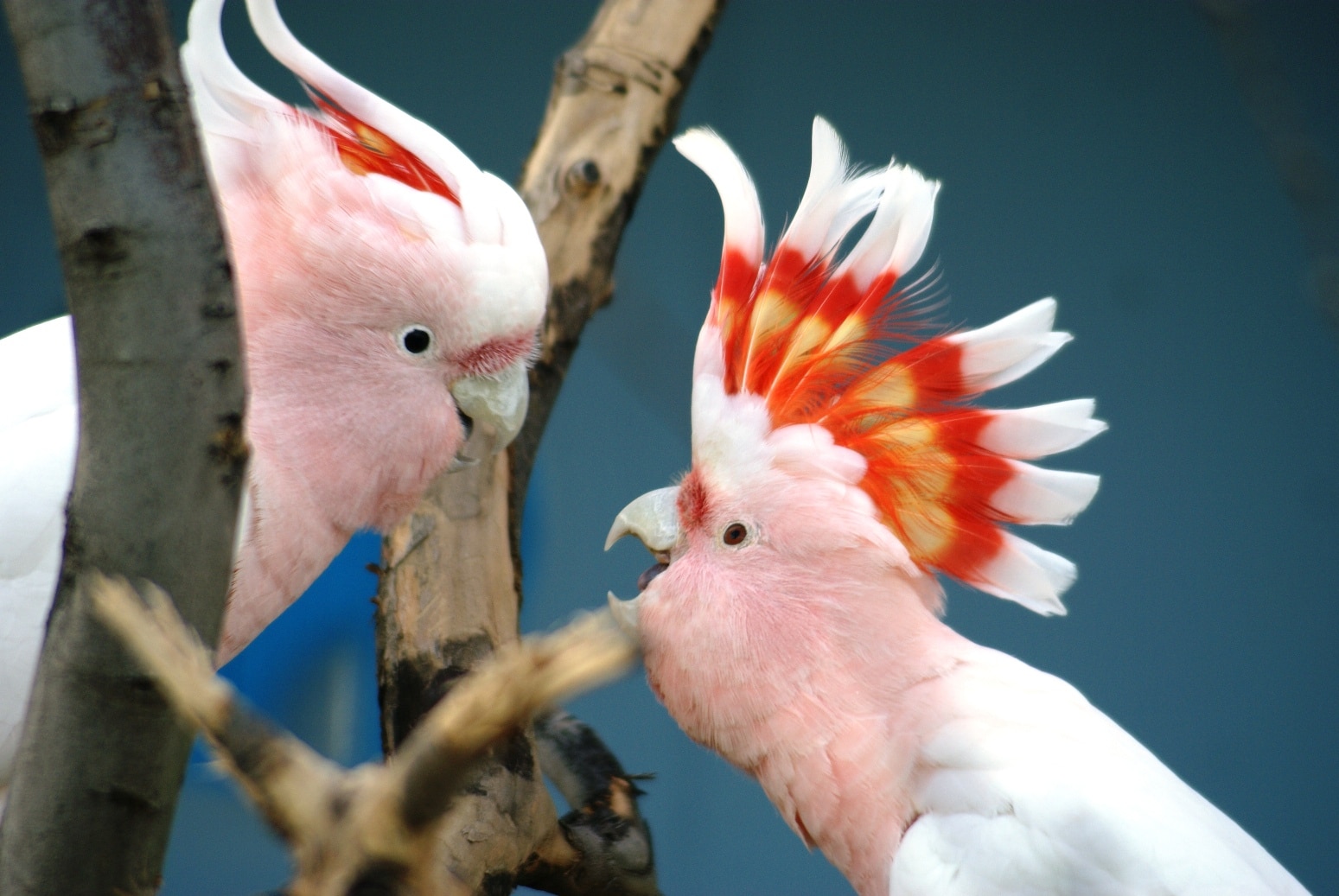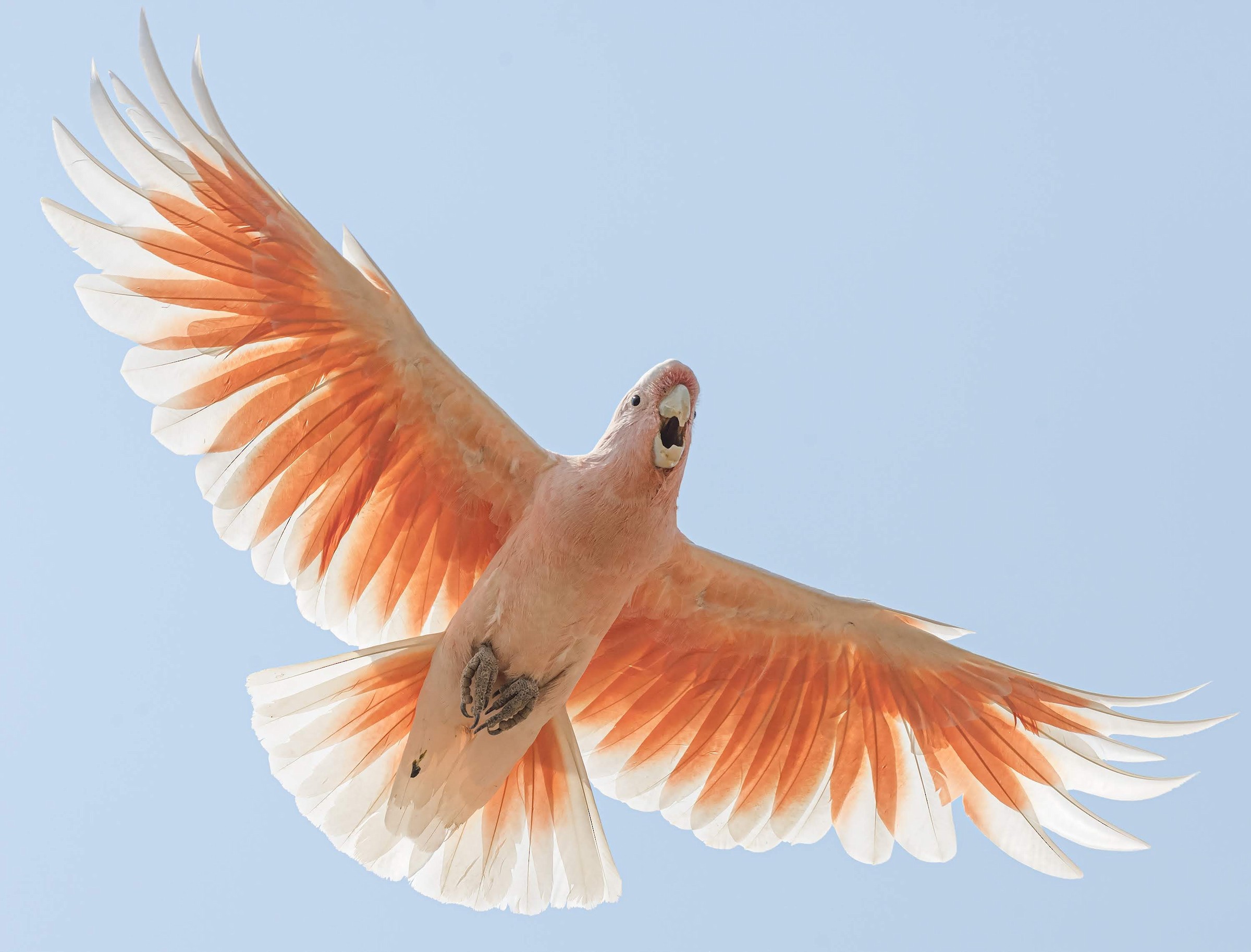Major Mitchell’s cockatoo, scientifically known as Lophochroa leadbeateri, is a captivating medium-sized cockatoo species found in the arid and semi-arid inland regions of Australia. Commonly referred to as Leadbeater’s cockatoo or the pink cockatoo, this beautiful bird can also be spotted in other climates, including the subtropical region of South-East Queensland. With its distinctive appearance and habitat versatility, Major Mitchell’s cockatoo is a fascinating and cherished avian resident of Australia’s diverse landscapes.
Appearance
The Major Mitchell’s cockatoo, also known as the Pink cockatoo due to its pale pink coloration, is named in honor of Major Sir Thomas Mitchell, an explorer of Southeast Australia in the 1800s. This striking bird is celebrated for its soft white and salmon-pink feathers, adorned with a vibrant yellow and red crest, making it one of the most beautiful cockatoos. Its underwings display an orange-pink hue, while the flight feathers are white. Males have dark brown eyes, while females possess pink or red eyes.Mitchell’s Cockatoo
Distribution

Native to Australia, the Major Mitchell’s cockatoo is found in the semi-arid and arid inland regions. Its habitat ranges from the southwest of Queensland to the northwest of Victoria, across most of South Australia, up to the southwest of the Northern Territory, and along the west coast from Shark Bay to about Jurien. Occasionally, it can be spotted in eastern areas such as New South Wales, as far east as Bourke and Griffith. The bird prefers arid to semi-arid regions with access to water sources, seeking nesting habitats in forested areas.
Habits and Lifestyle

In terms of behavior, breeding pairs of Major Mitchell’s cockatoos maintain a territory of about two kilometers and defend it against other breeding pairs. They keep in contact with other pairs and non-breeding birds, often gathering in groups and roosting communally at night. Flocks can consist of 10 to 50 birds and are sometimes seen in the company of other cockatoo species like galahs and little corellas. The species is active during the day and can be found foraging for seeds on the ground or in trees. While they are not strong fliers, they carry out local migrations in search of food.
Mating Habits
The Major Mitchell’s cockatoos exhibit monogamous mating behavior, forming lifelong pair bonds. During the breeding season, which spans from August to October, male birds attract females by showcasing impressive displays. They strut along branches, bobbing their heads up and down, and proudly raising their crests to entice potential mates. Both the male and female are involved in constructing their nest, gathering materials like pebbles and bits of wood. They often reuse the same nest in consecutive years. To maintain their territory, mating pairs prefer nesting at least one kilometer away from other pairs.

The female lays a clutch of two to five eggs, usually at intervals of one egg every 2 to 3 days. Incubation lasts for 23 to 30 days, during which the dedicated parents take turns caring for the eggs. After hatching, the chicks remain in the nest for 6 to 8 weeks before they are ready to fledge and fly. The parents continue to feed and nurture them, with the male playing a significant role in providing food for the family for about 8 more weeks.
Once the young birds become independent, which typically occurs between 14 to 16 weeks of age, they stay with their parents and form small family groups for a period of time. These family bonds persist even after the chicks have achieved independence. It takes approximately 3 to 4 years for the young birds to reach reproductive maturity and potentially establish their own lifelong pair bonds.
Population
Population threats
Major Mitchell’s cockatoo is under threat by the clearing of woodland, which results in the loss of trees, which contain nesting cavities. Illegal trapping for trade is another main threat to this species. Humans illegally collect eggs, chicks, or adults because of their high market value in the pet industry.

Population number
According to the IUCN Red List, the global population size of The Major Mitchell’s cockatoo has not been quantified, but it is believed to be large as the species is described as common in at least parts of its range. The nominate subspecies, one of two recognized subspecies, is thought to number around 50,000 individuals. Major Mitchell’s cockatoo is classified as Least Concern (LC) on the IUCN Red List.
Ecological niche
Major Mitchell’s cockatoos eat the fruit and seeds of numerous native plants and probably act as a significant seed disperser within Australian ecosystems.
